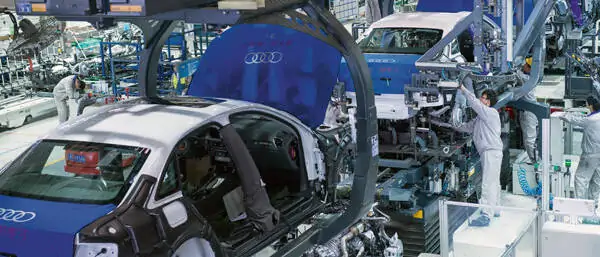Procurement logistics – Definition: “Just in sequence”
“Just in sequence” refers to a type of delivery in which the required inventory is delivered to the right place at exactly the right time, in exactly the right quantity and type, where it is processed immediately. The crucial difference between this and ‘just-in-time’ procurement logistics is that the supplier must ensure that the inventory is packed in the correct sequence, in which it is ultimately received by the customer.
In order to realize a smooth procurement according to just-in-sequence, an electronic data exchange between customer and supplier is indispensable. A typical area of application is the automotive industry. Different variants of modules, such as two thousand olive-green and one thousand grass-green car doors, including handles and windows, are delivered to the assembly line in the right sequence and position, and can be attached to the existing construction and passed on.
Just-in-sequence production is therefore based on the production cycle. This form of procurement logistics is made possible by good transport planning. The task of transport planning is to keep transport and inventory costs as low as possible. These costs can be reduced by determining the optimal delivery size and calculating the correct cycle lengths.
Advantages of procurement logistics – just in sequence
- No stocks (transfer of ownership through installation)
- Module delivery / high parts integration
- Reduction of complexity – production
- Low handling requirement in assembly
- Low space requirement in assembly (per workplace)
- Realization of a high variant diversity
- Reduction of inventory costs, storage space is no longer required
Disadvantages of procurement logistics – just in sequence
- Disadvantage of just-in-sequence procurement: On the one hand, the increased communication effort. In the communication between customer and supplier, protocols on the current production status must be constantly exchanged, otherwise the delivery of the wrong parts can lead to cumbersome rework.
- High dependencies with regard to technology
- On the other hand, natural influences such as snow, storm damage or similar endanger smooth production. Complications on the route, such as accidents or detours, can mean that supplies do not reach production on time, which in turn can result in a production stoppage.
For more information on the area of “production”, see Lean Heijunka method and Lean production in intralogistics.
Image source: Audi press
